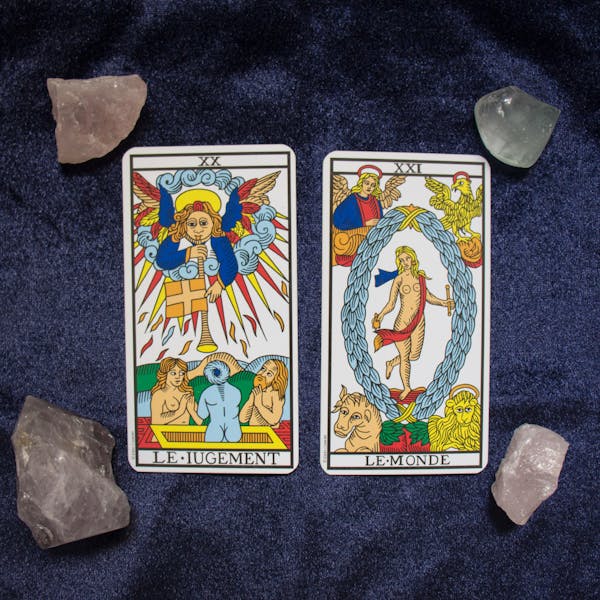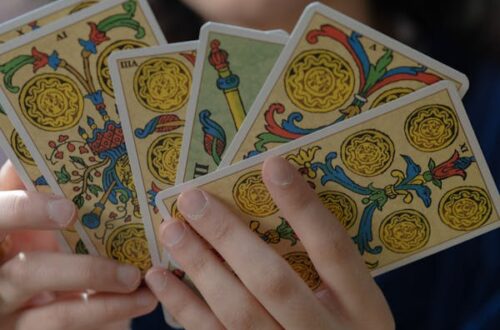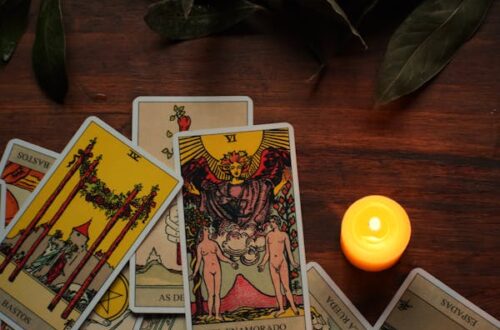
Tarot and Angel Cards: Differences and Similarities
Table of Contents
Tarot and Angel Cards: Differences and Similarities
Introduction
In the world of divination and spiritual guidance, Tarot and Angel cards hold significant places.
Both are used for insights into the past, present, and future, yet they differ fundamentally in their origins,
structure, and interpretation. This article delves into the nuances of each, highlighting their unique characteristics
while exploring their similarities.
Understanding Tarot Cards
Historical Background
Tarot cards have a rich history, dating back to the 15th century. They originated in Europe, initially serving
as playing cards before evolving into tools for divination. The first documented mention of Tarot for divinatory
purposes appears in the 18th century. The cards are typically divided into two main sections: the Major Arcana
and the Minor Arcana. The Major Arcana consists of 22 cards, each representing significant life themes, while
the Minor Arcana contains 56 cards divided into four suits, reflecting everyday events and situations.
Structure and Interpretation
Each Tarot deck contains a unique blend of symbolism, art, and numerology.
For instance, The Fool card often signifies new beginnings, while The Tower suggests upheaval.
The interpretation of Tarot cards relies heavily on the reader’s intuition and the context of the inquiry.
When drawn in a spread, cards interact, creating a narrative that guides the reader in understanding the querent’s
circumstances. Thus, the relationship between the cards plays a crucial role in the overall interpretation.
Exploring Angel Cards
Origins and Development
In contrast, Angel cards are a more modern creation, emerging in the late 20th century.
These cards aim to connect users with angels and spiritual guides, offering messages of support and encouragement.
Angel cards come in various themes and designs, often emphasizing love, healing, and positive affirmation.
Unlike Tarot, Angel cards typically do not follow a standardized structure, allowing creators more freedom in design and purpose.
Deck Structure and Usage
Angel card decks generally consist of 44 cards, though the number may vary. Each card presents a specific message,
often accompanied by a positive affirmation. The simplicity of the messages makes them accessible to users of all
experience levels. When using Angel cards, the focus is on receiving guidance rather than predicting future events.
This aspect promotes a sense of peace and empowerment, emphasizing personal growth and healing.
Similarities Between Tarot and Angel Cards
Spiritual Guidance
Both Tarot and Angel cards serve as tools for spiritual guidance. Users employ them to gain insights into their lives,
understand their challenges, and explore their potentials. Each card drawn acts as a focal point for reflection,
inviting individuals to contemplate their situations and feelings.
In this way, both decks foster a sense of connection to a higher self or spiritual dimension.
Intuitive Interpretation
Another similarity lies in the reliance on intuitive interpretation. Regardless of whether one uses Tarot or Angel cards,
the reader’s intuition plays a vital role in the interpretation process. Users often report that their interpretations
can differ significantly from one reading to another, highlighting the fluid nature of these tools. This adaptability
allows for personalized experiences, enriching the user’s journey towards self-discovery and enlightenment.
Differences in Purpose and Approach
Focus of the Readings
One of the primary differences between Tarot and Angel cards is the focus of the readings.
Tarot often delves into the complexities of life, addressing challenges, conflicts, and pivotal decisions.
The cards can reveal hidden truths and encourage users to confront their fears. In contrast, Angel cards typically offer
messages of love, support, and reassurance. They tend to emphasize the positive aspects of a situation, encouraging
personal growth and healing rather than confrontation.
Symbolism and Imagery
The symbolism and imagery within Tarot cards differ significantly from that found in Angel cards.
Tarot cards feature a wide range of symbols drawn from various traditions, including astrology, Kabbalah, and alchemy.
This rich symbolism allows for layered interpretations. On the other hand, Angel cards usually present simpler imagery,
focusing on themes of light, love, and protection. The visual style of Angel cards is often softer, appealing to those
seeking comfort and guidance.
How to Choose Between Tarot and Angel Cards
Personal Preference
When deciding between Tarot and Angel cards, personal preference plays a crucial role.
Individuals who are drawn to intricate symbolism and complex narratives may find Tarot more appealing.
Conversely, those seeking uplifting messages and encouragement may prefer Angel cards. It is essential to consider
one’s own comfort level and spiritual inclinations.
Intended Use
Additionally, the intended use of the cards should be considered. For instance, individuals looking for deeper insights
into their life situations may gravitate towards Tarot. In contrast, those seeking affirmation or healing may find
Angel cards more suitable. Understanding one’s goals for using the cards will aid in making an informed decision.
Conclusion
In summary, both Tarot and Angel cards offer unique paths to spiritual exploration and personal growth.
While Tarot provides a deeper examination of life’s complexities, Angel cards promote positivity and support.
Ultimately, the choice between the two comes down to personal preference and the intended use of the cards.
Regardless of which path is chosen, both Tarot and Angel cards can facilitate profound connections to the self and the universe.
Bibliography
- Greer, Rachel Pollack. 78 Degrees of Wisdom: A Tarot Journey to Self-Awareness. HarperCollins, 1980. ISBN: 978-0062502238.
- Buckland, Raymond. Tarot: The Complete Guide. St. Martin’s Press, 2004. ISBN: 978-0312333297.
- Doreen Virtue. Angel Cards: A Guide to Angels and the Universe. Hay House, 2002. ISBN: 978-1401900227.
- Bruno, Anthony. The Angel Card Deck: Messages from Your Angels. Llewellyn Publications, 2010. ISBN: 978-0738723704.
- Vann, Benebell. Tarot and Divination: A Guide to the History and Use of Tarot and Other Divination Techniques. Self-Published, 2016. ISBN: 978-0996151407.




